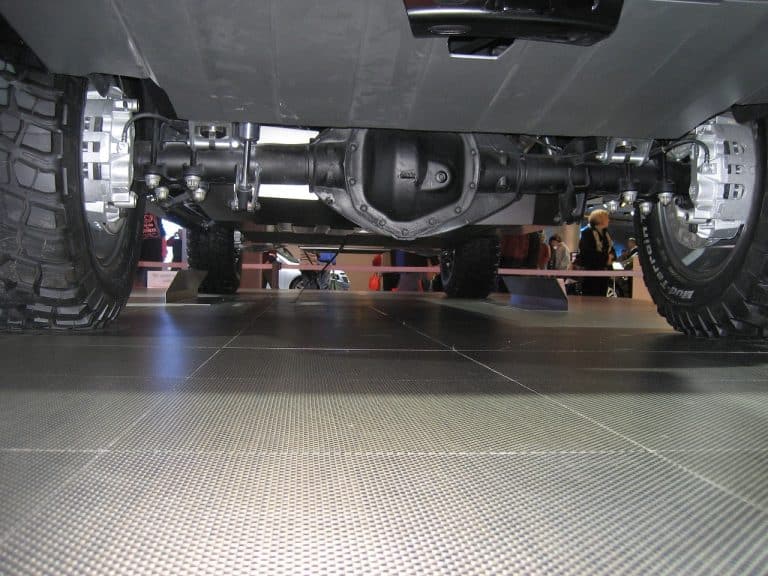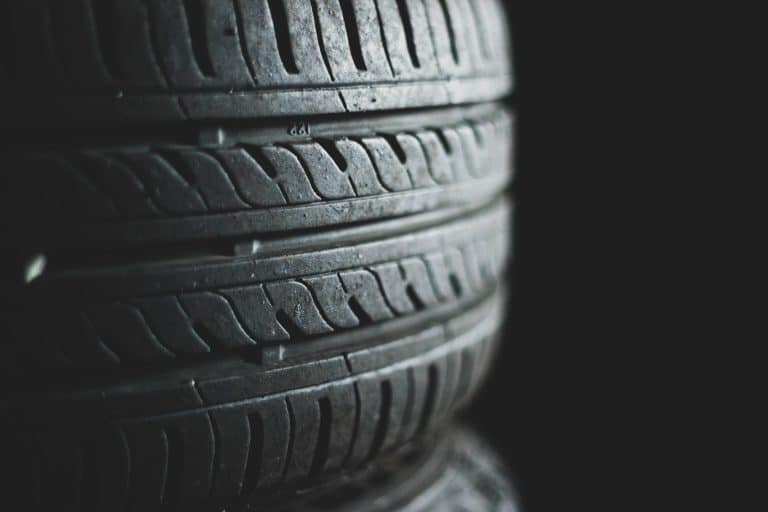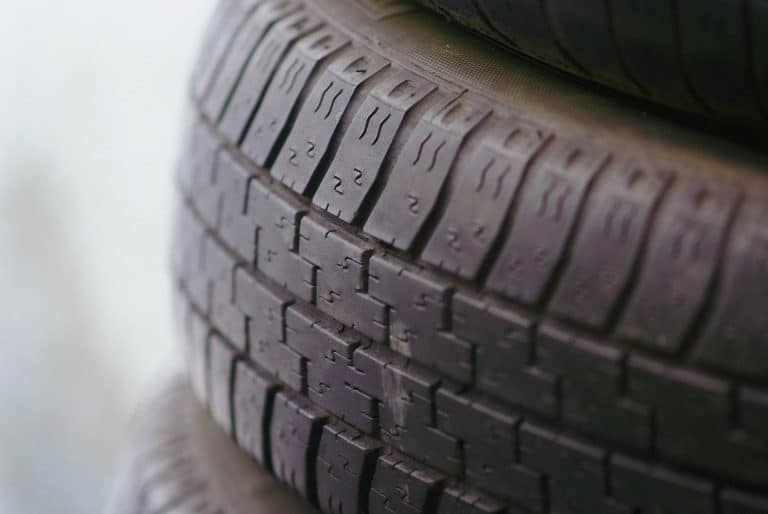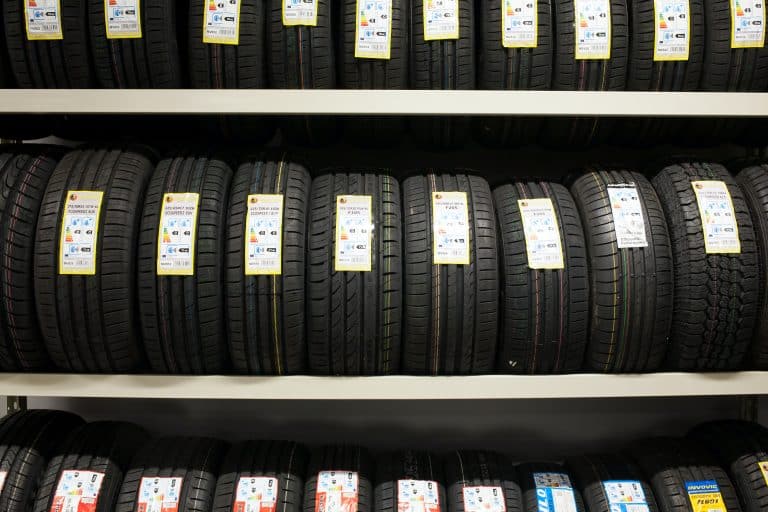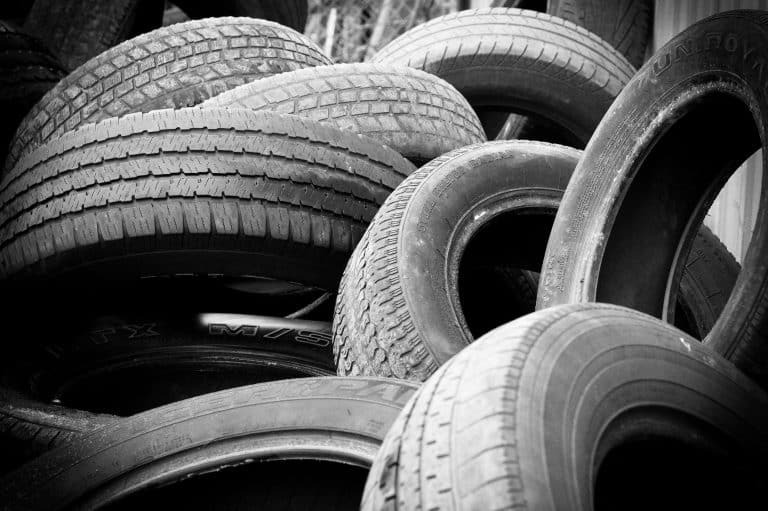Tires Not Gripping in The Rain: What to Do?
Whenever we talk about tires, we cover multiple aspects of performance. Take summer tires, for example. The ideal conditions for them are a hot and dry sunny day, but that doesn’t make them unusable in the wet.
Unless you’re running a set of barely legal road tires, you should get performance in multiple conditions. Regardless if we’re talking about summer, winter, or all-season tires, they are all made to cover multiple scenarios.
Some are better and more versatile, like all-season or all-weather tires, but that doesn’t make the others poor performers. One thing these tires have in common is their ability to perform in dry and wet conditions. The conditions will differ, however. Summer tires like hot weather, while winter ones are for freezing temperatures.

Dry conditions aren’t a problem, as all tires deliver performance well. However, wet roads are problematic, so some wonder if their tires are good.
As non-ideal as the conditions are, having less grip on wet is normal. But what amount of performance should you expect?
Why Are Tires Not Gripping in The Wet?
On the one hand, wet roads aren’t perfect for tires to deliver the best possible performance. The levels of grip and traction won’t be the same as on dry roads. That said, there are some situations where the performance is way worse, meaning there is some problem.
Why Do Tires Perform Worse on Wet than on Dry Roads?
Before discussing the problems, let’s discuss what’s “normal.” A set of tires will have more traction on a dry surface than a wet one. This is because water reduces the friction coefficient between the tire and the road, acting sort of like a lubricant.
In most cases, the slip is the worst in situations where it just started raining. The roads are damp and “greasy,” so the levels of grip and traction won’t be fantastic. It doesn’t get much better in harsh conditions, where you may face aquaplaning.

Regardless of the situation, you shouldn’t expect your tires to perform the same on wet and dry roads. So caution is recommended in non-dry conditions.
Reading this, you think you should expect worse performance in wet, but how much worse should it be? And what if you’re having a terrible performance? This is where I talk about the potential problems of the tires.
What Can Impact a Tire’s Wet Performance?
There are multiple aspects you should consider when you’re thinking about wet performance. It won’t be the same as on dry, but that doesn’t mean the tires should be useless at the first sign of rain. Let’s see what aspects can influence wet performance.
Tire Age
I may sound like a broken record, but the age of the tires is crucial in these conditions. Old tires aren’t poor performers just in wet, but that’s the topic for today, so I’ll stick to that side of the story.
Any tire’s performance will be the best when it’s fresh from the oven. This is the main reason I’m against buying used tires and advise people to check the manufacturing week of the new tires. Once they start to age, their performance drops.
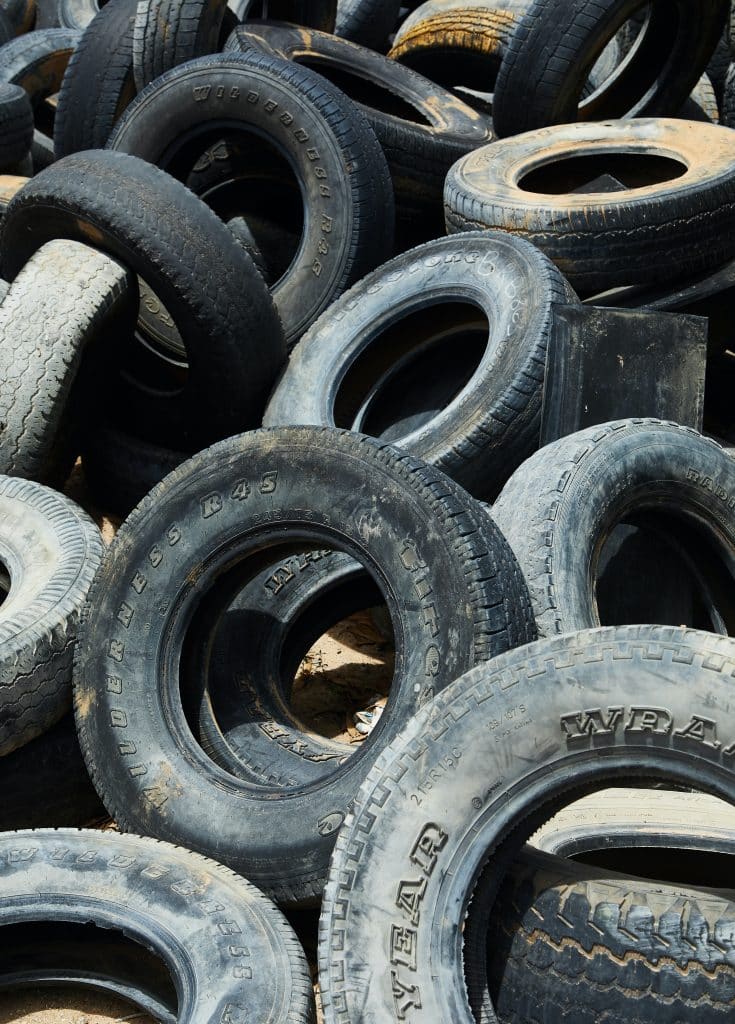
There is a gradual drop in the performance of the tires. The differences become more noticeable after 5-6 years, regardless of how much you’ve driven them. A best-case scenario would be well-maintained tires that may last up to 10 years. As good as it sounds, there are lots of factors that can reduce that.
As tires age, the rubber compound hardens and reaches a point where it performs like plastic. In these cases, the grip and traction levels on wet surfaces will be terrible, even if they seem fine on dry roads.
Tread Depth
The second reason we replace tires is the tread depth. They won’t last forever because the tread depth reduces as you drive. This is because of the friction between the tires and the road, where microscopic particles get ripped apart. It’s unnoticeable daily, but after a year or two, you’ll notice that the depth reduces.
You probably read me talking about sipes, which are part of the tread that helps in wet conditions. Some manufacturers have begun making them full-depth, but that’s not the case for others. At a certain point, there may not be any of them left as they wear down.
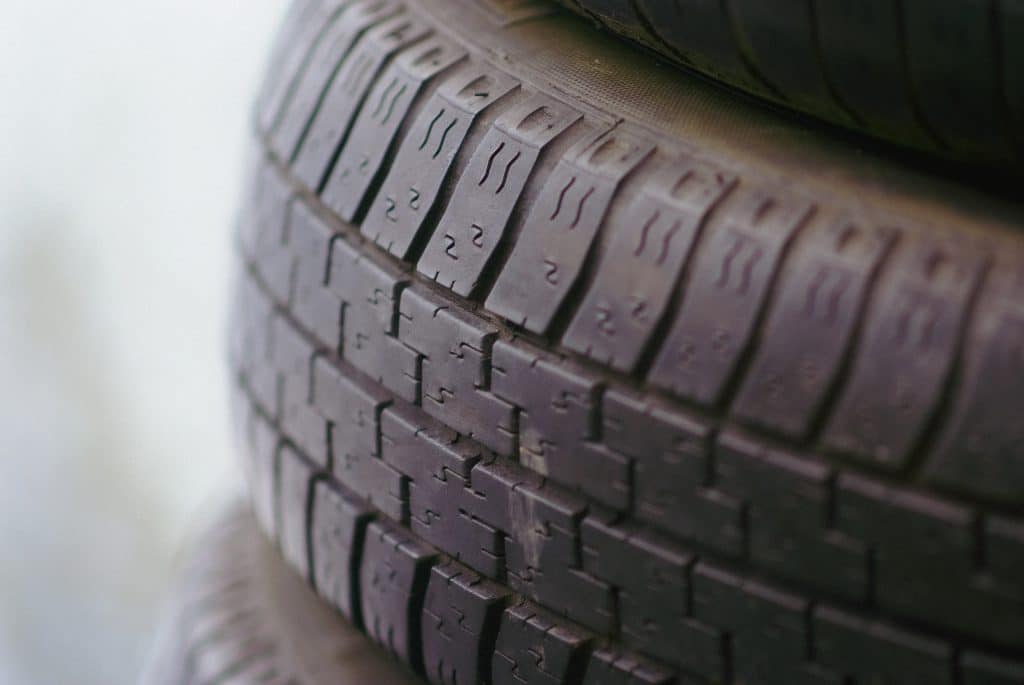
Another crucial aspect of the tread pattern is the grooves, which are essential for heavy rain. They help channel the excess water and evacuate it from beneath the tire, helping with aquaplaning resistance. As the tread depth decreases, there is less void, so the tire won’t be as effective.
Even though legally you may drive the tires until 2/32″ depth, once you reach the 5/32″ or 4/32″, you will notice a considerable drop in performance.
Tire Pressure
Driving with the correct pressure is crucial to getting the most life out of your tires and the most performance. However, going too much over or under the recommended pressures will result in a poor-performing tire.
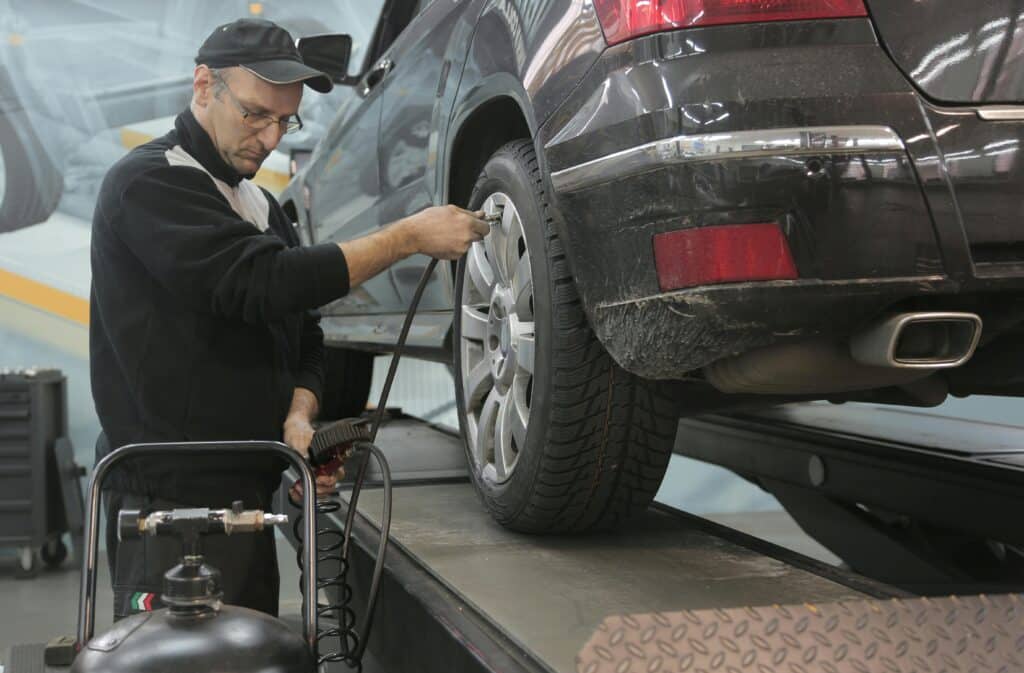
When a tire is under or overinflated, the contact patch is reduced, and the tire rolls on the sides or the central part. This means that regardless of how wide the tires are, you won’t be using the maximum, leading to a loss of grip and traction.
How To Prevent Tire Slip on Wet Roads?
Depending on why your tires are slipping, the course of action will differ.
The most important thing is awareness of the conditions. In rainy situations, the tires are expected to perform slightly worse than in dry situations, so keep that in mind. We are advised to be more cautious and adjust the speed according to conditions.
Speed is a crucial factor, and considering that the grip and traction levels are lower, adjust it accordingly. The main reason for this is the braking distances. In wet conditions, tires have longer braking distances, so it’s a good idea to avoid speeding in case you need to do an emergency braking.
Next up is the distance with the car in front. It’s the same idea as before. The braking distances in wet are longer, so leave extra space if you need to brake suddenly. Besides this, avoid making sudden inputs like flooring it or making a sharp turn with the steering wheel. The limited grip will cause problems, and you can end up causing a crash.
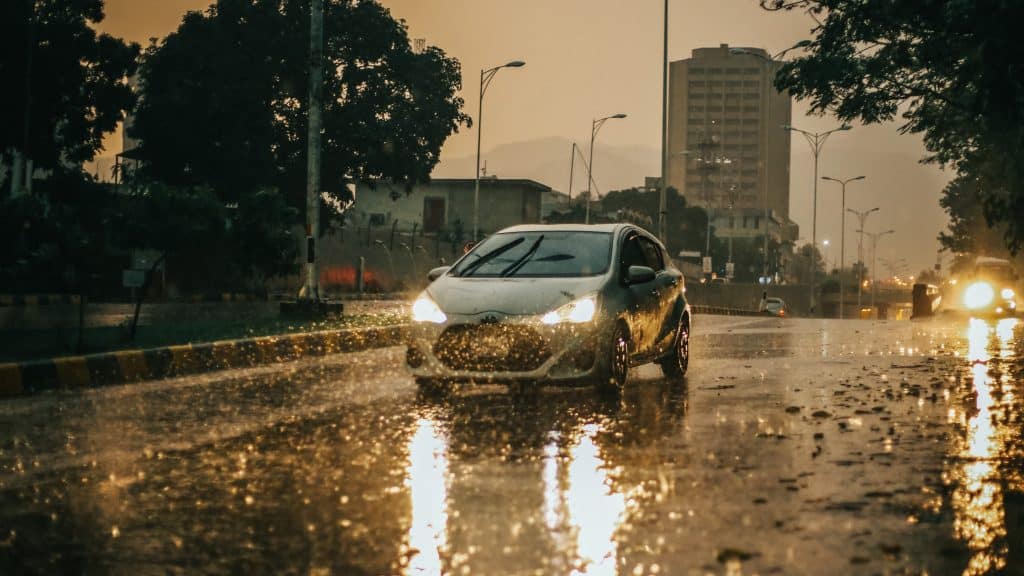
Speaking of, you should also be mindful of the tires. Old or worn-down tires won’t perform nearly as well as newer ones. The grip or the aquaplaning resistance may be poor, so you won’t get as much performance as you should. In these situations, replacing the tires is the best course of action. It’s not cheap, but a good way to remain safe on the road.
Finally, we have the tire pressure, which is crucial from multiple perspectives. In this case, driving with over or under-inflated tires means you’re not getting the maximum performance. With that, you’re also risking uneven wear, which can reduce the lifespan of the tires. So, checking and adjusting the pressures according to the car manufacturer’s specs is essential. Some models have TMPS sensors that give an exact readout, but the rest will need to check things manually.
Conclusion
As much as we want, tires aren’t perfect, and there are situations where they perform better when compared to others. Regardless of what kind of tire you have, dry is where you’ll get the most out of it. In wet conditions, things aren’t as ideal.
Even new tires won’t have as much grip on wet roads, so that’s not something to worry about. This is also why we must adjust our driving style under these conditions. With that said, there are situations where it’s not us, it’s the tires.
Older or worn-down tires are a common reason for poor grip levels. The tires won’t deliver the performance needed for safe driving, and if you add the pressure factor, you have a perfect recipe for the worst performance possible.
This is why monitoring the tires’ age, depth, and pressure is essential. They are a crucial link to how safe you will be when driving. If you’re on top of that and drive cautiously in wet conditions, the grip levels won’t be as poor as you think.

